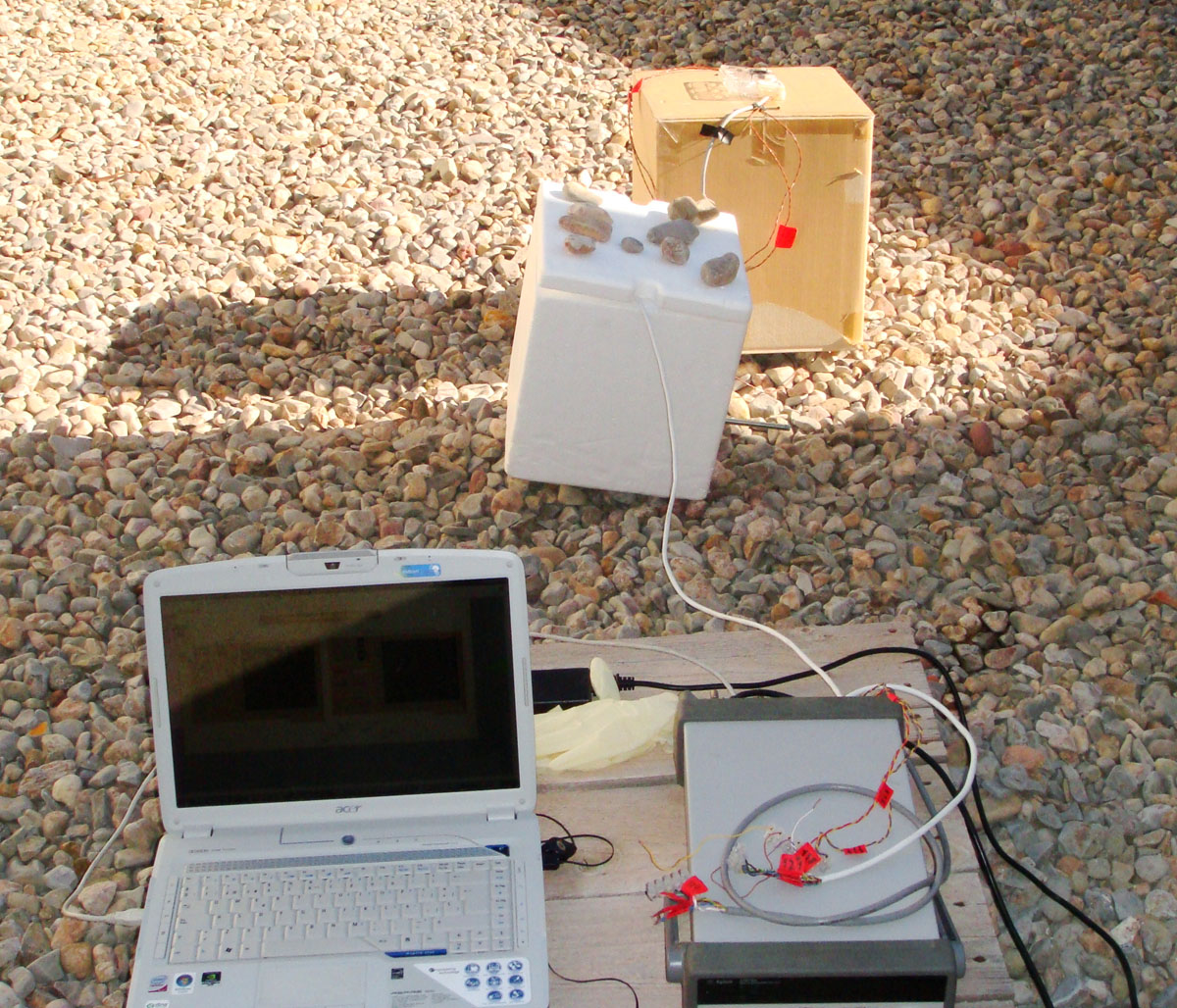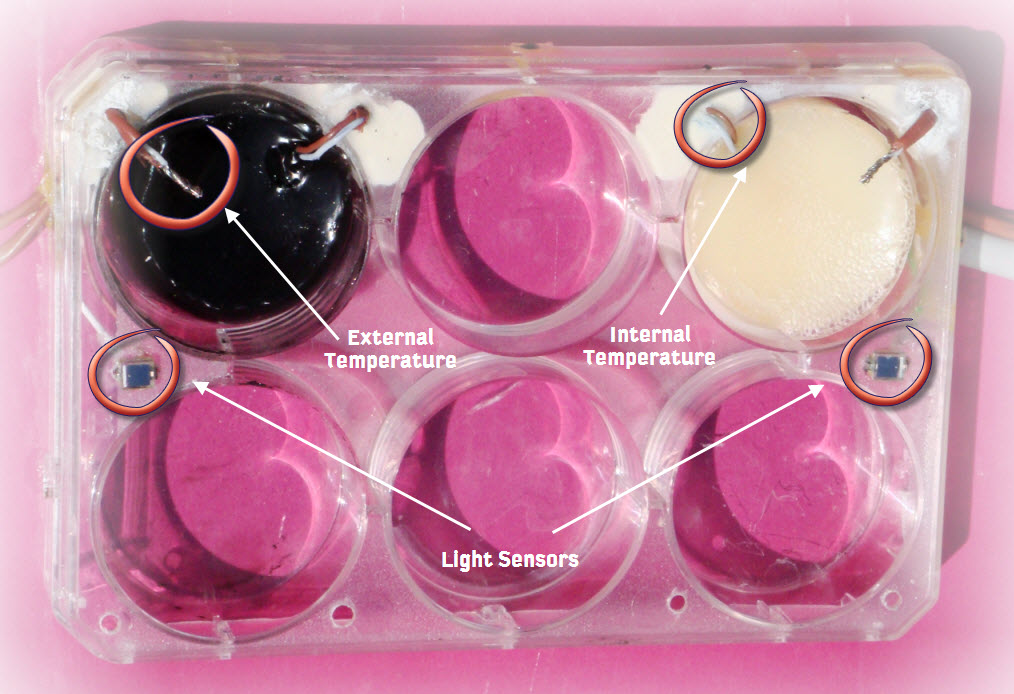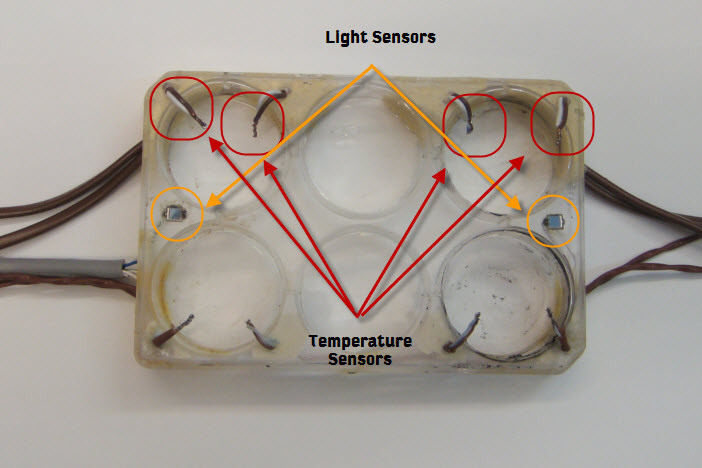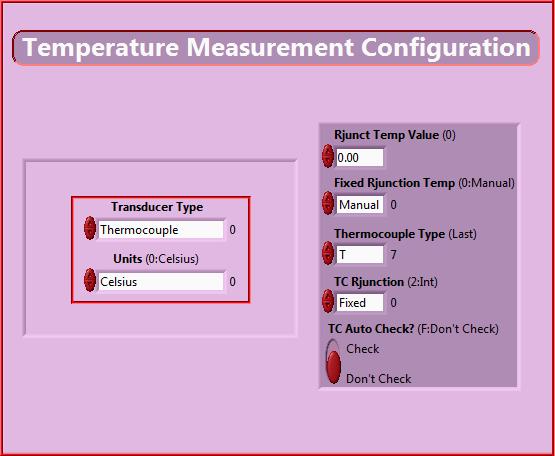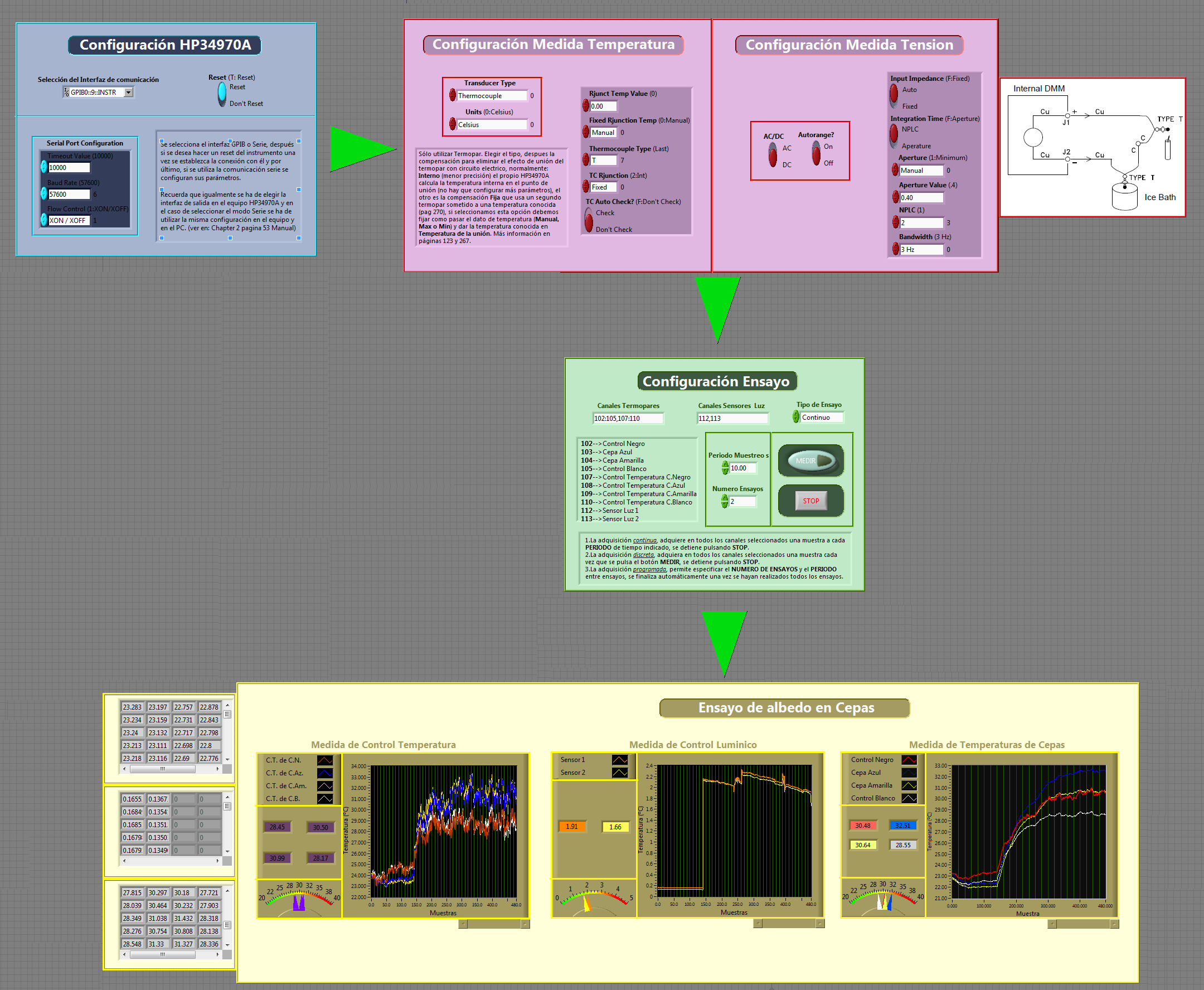Team:Valencia/WB
From 2010.igem.org
Alejovigno (Talk | contribs) (→Mesurement System) |
Alejovigno (Talk | contribs) |
||
| Line 50: | Line 50: | ||
The signals coming from the sensors were digitally acquired using a datalogger, explained in the next section. | The signals coming from the sensors were digitally acquired using a datalogger, explained in the next section. | ||
| + | |||
| + | === Datalogger === | ||
| + | |||
| + | The electronic acquisition system that we use is the Datalogger | ||
| + | 34970A (Agilent). | ||
| + | This equipment requiters a setup for each one of the sensors, like the following: | ||
| + | |||
| + | [[Image:Valencia_WB_screen1.jpg|thumb|center|500px|Set-up for the acquisition of the signals coming from the sensors.]] | ||
| + | |||
| + | <!-- Video of the datalogger, alone with Raul!! --> | ||
| + | |||
| + | === The computer === | ||
| + | The computer is used to control que acquisition unit (datalogger) and to receive the income flow of data from the sensors, allowing us to represent the data in real time. | ||
| + | An Interface in LawView was design to handle all the configuration and the data involver in the experiments. | ||
| + | |||
| + | [[Image:Valencia_WB_screen2.jpg|thumb|center|500pt|LabView program panel control screen. Bottom, from Left to rights:, Outside temperature, Light sensor output, inside temperature]] | ||
| + | |||
| + | In this screen we se the panel of the LavView software and in the bottom, there are some graphs showing the carried out experimenter. | ||
| + | Once the assay is done, is possible to save al the data of the experiment. | ||
| + | |||
<!-- | <!-- | ||
Revision as of 15:11, 26 October 2010
Time goes by...
(El tiempo pasa...)
Follow us:

Our main sponsors:

Our institutions:

Visitor location:
» Home » The Project » Creating Technologies
Microbial Albedo Recorder
Contents |
Introduction
In order to study the capability of the cultures to absorb energy coming from sunlight depending on their coloring, we are going to measure the temperature that the cultures reach compared with others control know-color cultures. These temperatures are measured by a system of thermocouples.
For this objective, it has been designed a dish in which our E. Coli and yeast cultures are studied. There are as well two reference cultures: one entirely black and another totally white. The cultures are exposed to radiation coming from sunlight. All cultures are previously kept in constant and known temperature.
In order to make sure that the temperature differences among the cultures are due only to albedo effect, two strategies have been designed.
- Several light sensors have been laid out symmetrically. The signal received by these sensors is transmitted to an electronic circuit which produces an electric response that finally ends up in the datalogger
- Several thermocouples are arranged surrounding the cultures to make sure that the external temperatures are equal for all of them. We used our temperature mesurement system in order to accomplish this task.
Therefore, any temperature difference between the cultures has to be produced by the capability of absorbing light. This temperature is then measured by another thermocouple inserted into the culture. Furthermore, all this data is recorded and shown in real time through a computer screen.
Mesurement System
The aim of this part of the project is to quantify the difference of albedo depending on the color of several cultures of microorganisms.
In order do this, we need to measure two types of magnitudes: the amount of solar radiation that reaches the cultures (illuminance) and internal and surrounding temperatures of the cultures. This is because we propose that if the surrounding temperature of the cultures and the incident solar radiation are the same for all the cultures, then our Microbial Albedo Recorder system can estimate the albedo difference between those cultures, because the difference in the internal temperatures will be due only to the albedo effect.
The measurement system has three main parts:
- The test boards,
- the datalogger and
- the computer.
The test board and sensors
The test board is formed by eight temperature sensors and 2 light sensors. All of them placed in a symmetric way surrounding the small culture dishes, in order to cancel possible location bias errors, as is posible to see in the next figure.
This board does not perform any signal conditioning, it only serves as frame to mount all the sensors and the cultures.
In the case of the light sensors, their output signal is conditioned in an electronic interface, to see in more detail the light sensor go to Light Sensors.
In the other hand, the temperature sensors are thermocouples, with their proper compensation.
The signals coming from the sensors were digitally acquired using a datalogger, explained in the next section.
Datalogger
The electronic acquisition system that we use is the Datalogger 34970A (Agilent). This equipment requiters a setup for each one of the sensors, like the following:
The computer
The computer is used to control que acquisition unit (datalogger) and to receive the income flow of data from the sensors, allowing us to represent the data in real time. An Interface in LawView was design to handle all the configuration and the data involver in the experiments.
In this screen we se the panel of the LavView software and in the bottom, there are some graphs showing the carried out experimenter. Once the assay is done, is possible to save al the data of the experiment.
 "
"
